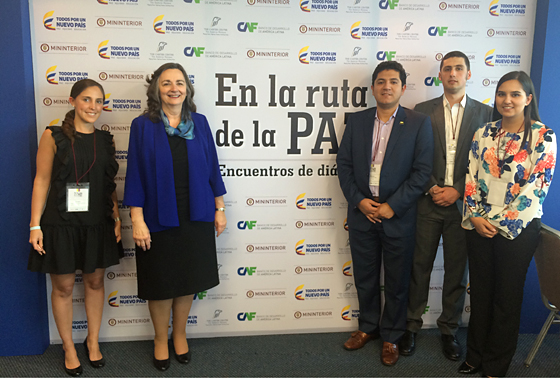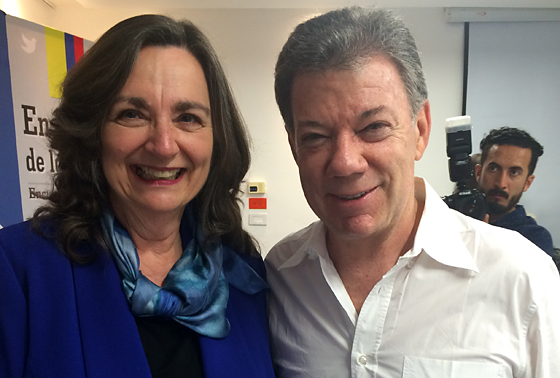For more than 50 years, Colombia has been plagued by civil war. The fighting forced more than 5 million people from their homes and claimed the lives of more than 200,000, according to most reports. But finally, after four years of negotiations, peace is at hand. The Carter Center has been working behind the scenes in Colombia to help prepare for life after war.
Jennie Lincoln, director of the Carter Center’s Americas Program, explains:
Q: What was this conflict about?
It centered on the government of Colombia and the Revolutionary Armed Forces of Colombia – People’s Army (FARC-EP), a guerrilla organization formed in the 1960s with the principal objective of creating a Marxist-Socialist society. In the 1980s, the FARC teamed up with drug traffickers, making the problem more difficult. For the past decade, the war has been fought largely in the countryside rather than in the cities.
Q: What is happening now?
President Juan Manuel Santos announced an effort in 2012 to negotiate a peace accord with the FARC. On Aug. 24, negotiators finally signed a 297-page agreement. President Santos announced that there will be a formal signing of this accord before the end of September. The people will be asked to approve it in a plebiscite on Oct. 2.

More than 60 high-level officials came to a Carter Center-sponsored meeting in April to discuss legal and structural changes that would be necessary if the Colombian government signs a peace agreement with the FARC rebel group. Pictured here are (left to right) Juan Fernando Velasco, president of the Senate; Jennie Lincoln, director of the Carter Center’s Americas Program; Juan Fernando Cristo, minister of the interior; and Sergio Jaramillo Caro, high commissioner for peace. (All photos: The Carter Center)
Q: What did the FARC get?
They got the right to operate as a political entity in the short term, and in the longer term as participants in political parties. Most of them will not see jail time. The plan is to set up special war crime tribunals. If they admit to their crimes, they will be eligible for alternative sentences focused on restorative justice for their victims. In addition, the FARC received assurances of government protection from would-be assassins. They’ve been promised a handful of guaranteed seats in congress until the next election in 2018. These seats give them a voice but no voting rights. After 2018, they will compete in the political process. The government has also promised to invest in infrastructure and development in rural areas that have been FARC strongholds, with programs for reintegration and resettlement.
Q: What did the government get?
In a word, peace. The FARC has agreed to move to U.N.-monitored camps to disarm, to get out of the drug trade, and to integrate into Colombia society. The government has no illusions, however, about the challenges of implementing this accord and of ensuring that the ex-combatants do not re-arm with criminal bands or narco-traffickers.
Q: How do the people of Colombia feel about this?
Most people want peace. But after 50 years of kidnappings and murders and destruction, some want revenge. The peace accord is asking people to forgive and to begin to heal. It’s not easy. The government will have to work to sell this accord to the people.

The Americas Program staff worked quickly to put together the meeting in Cartagena. Pictured are (left to right): Ana Caridad, Jennie Lincoln, Carlos Lemos, Daniel LeMaitre, and María Alejandra Alvarez.
Q: What role is The Carter Center playing in this?
We have five projects underway:

Jennie Lincoln poses with Colombia President Juan Manuel Santos during a break in April’s meeting to discuss necessary reforms in the wake of a potential peace accord.
Q: How are you feeling about Colombia’s future?
I’m optimistic. It’s extremely rewarding to be a witness to history in the making. This peace accord ends the last civil war in the Americas — one that, because of its connections to drug trafficking, has had a ripple effect throughout the region. This is monumental not just for Colombia, but for the hemisphere.
Related Resources
Learn more about the Center’s Americas Program >
Please sign up below for important news about the work of The Carter Center and special event invitations.